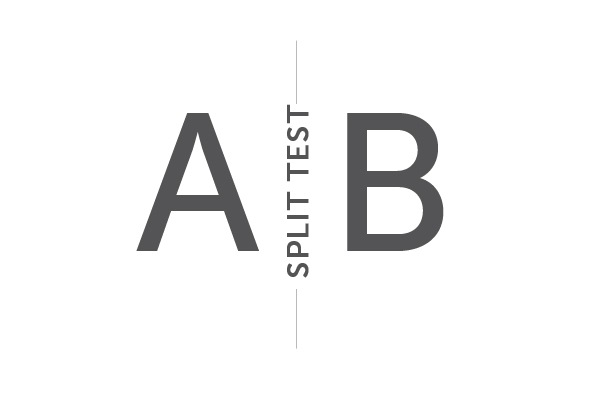Are your sales lackluster? Your click-through rates uninspiring? Chances are it’s not your product that’s the issue – it’s the way you’re selling it!
Copywriting is both an art and a science that’s difficult to learn, but important to implement. If you don’t have the years of study needed to master this discipline yourself, check out the following seven techniques. Applying them to your own ad copy – whether you’re dealing with short PPC ads or long-form website sales letters – will go a long way towards improving your sales conversions.
Technique #1 – Tweak your headlines
One of the most powerful places to begin your optimization efforts is with your ad’s headline. Headlines are essentially your most “make it or break it” pieces of copy. If you can’t capture a reader’s attention with your headline, all of the effort you’ve put into the rest of your ad won’t make a bit of difference.
So how can you be sure your headlines are up-to-snuff? Start by studying popular headline formulas. Copywriting experts have spent decades cultivating these formats, so you can be reasonably certain they’ll work for your specific business circumstances. But don’t just copy them as-is. Try to understand what makes each headline formula so powerful and then use your understanding to draft headlines that’ll resonate best with your unique audience.
Still need to be convinced that this is the best place to start? Check out this case study from Visual Website Optimizer, in which a Scandinavian clothing store was able to increase its conversion rate by 127% with a simple headline tweak.
Technique #2 – Focus on benefits
The fact that the TV you’re selling has a 101-inch diagonal is a feature. And the fact that your buyers will be able to throw the types of Super Bowl parties that make their friends jealous for years to come is a benefit. Know the difference between the two!
Features are important in the early stages of the buying process. If your ads are specifically geared towards people who are still conducting research on the various options that are available to them, including features might be important. But if you’re trying to capture the people who are ready to pull out their credit cards and make a purchase, incorporating your product’s benefits into your ads is a surefire way to boost conversions.
Technique #3 – Answer objections
Another key to closing the deal is to be sure any objections your customers might have are resolved satisfactorily with your ad copy.
Now, obviously, the type of ad you’re writing will dictate how much space you have to do this. Addressing objections in an Adwords search ad will, by nature, be more challenging than on a full-page magazine ad or website landing page, simply because you have so many fewer words in which to do so. If you have the space to do so, dedicating a section of your copy to answering the questions your customers have can be an extremely effective selling tool.
But that doesn’t mean you’re out of luck if you’re working with smaller ad formats. Even including something as simple as “60-Day Money Back Guarantee” in your Adwords ad copy might be enough to allay reader concerns long enough to get them past their objections and on track to complete your sales process.
Technique #4 – Test everything

Want to know if your headline is as effective as it could be? Test it. Need to know if your ads should focus on benefits or features? Test them. Concerned that you aren’t addressing objections effectively enough? Test them.
Are you seeing a pattern here?
When you’re writing ad copy, it’s easy to convince yourself that your words are so genius that there’s no way they won’t lead to conversions. The reality – of course – is that ego should have no part in this discussion. Sometimes, the copy that you like least converts the best, but you won’t know that unless you take the time to test everything.
If you’re running PPC or display ads, use a platform that has split testing features built in. If you’re more concerned about the ad copy on your website, use Google’s Content Experiments tool to serve up page variations with different text iterations. No matter what type of copy you want to test, there’s a tool out there that’ll help you do it – there’s literally no excuse not to use this powerful conversions technique!
Technique #5 – Connect with your audience
As you test different ad copy versions, you’ll need to get creative in coming up with the new text you’ll pit against your existing content. And as you do that, I’d like you to think about whether the language you’re using truly connects with members of your unique audience.
Neil Patel of Quicksprout frames it like this:
“Just for a moment, go back in time and imagine yourself in elementary school. Now think of the time where they made you sell candy door to door in order to raise money for the school. Which of your neighbors bought candy from you? The ones who knew you, right?”
If you want your ad copy to be effective, you’ve got to create this relationship between reader and advertiser. There are a number of different ways to do this, including:
- Incorporating testimonials into your copy
- Using images of happy customers or “behind the scenes” shots that humanize your business
- Being as transparent as possible about who your product is – and isn’t – best for
- Using your audience’s language when crafting your copy
The more you can get readers to connect and identify with your brand, the easier it’ll be to convert them into customers.
Technique #6 – Incorporate power words
Don’t let your conversion rates suffer due to uninspired copy! No matter how much testing or tweaking you do, boring ad text will never convert at the same level as content that’s bursting with energy and power words.
To get started with this technique, consult Copyblogger’s list of “The 5 Most Persuasive Words in the English Language,” which includes:
- “You” (either the general “You” or a person’s specific name)
- “Free”
- “Because”
- “Instantly”
- “New”
All of these words inspire powerful emotions in the people who read them. But to use them effectively in your own copy, you’ve got to be aware of context. Don’t just slap them in for the sake of including them. Instead, gently massage your existing text to add these and other words that’ll inspire powerful feelings and actions in your readers.
Technique #7 – Improve your offer
Finally, if you’re facing ad copy that isn’t converting, consider that it might not be your text that’s the problem – it might be your offer.
At its best, copywriting helps connect the right people with the right products by sparking the initial interest needed to introduce a prospect to a company’s sales funnel. At its worst, it’s putting lipstick on a very ugly pig that will ultimately lead to uninspired prospects or unsatisfied customers. If you’re afraid that you’re sitting squarely in the latter camp, it’s not a bad idea to try testing different offers before getting down to the brass tacks of improving your ad copy.
Even a single one of these techniques – when implemented correctly – can make a major difference in your ability to close sales. But now, I want to hear from you: Have you used any of these methods to increase your overall conversions? Share the results of your experiments – as well as any techniques I missed – in the comments section below!
Image Credit: Shutterstock & CGinspiration




